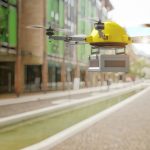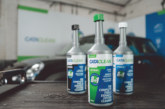Worldwide drone consultant, ConsortiQ, welcomes guidelines for commercial drone use in America, and speculates what similar edits to its aviation law could also mean for the businesses it helps in Britain.
In 2016, the Federal Aviation Administration (FAA) released a 624-page publication in America which provided the first national, uniform regulations for commercial operation of aircraft under 55lbs, in other words, drones. The date on which the new Part 107 rule for commercial drone use came into effect was long awaited by many American businesses as, although this new section of air law still presents limitations for companies that are wanting to provide a service using a drone, it opens up new opportunities for aerial innovation for many local businesses.
Restrictions
Among other changes, the key adjustment outlined in the Part 107 rule is the introduction of new written flight exams in place of the lengthy process of applying for waivers in order to fly legally, for commercial purposes. Now, without this high barrier for entry, it is much easier for a business to integrate drone technology to improve its services. Yet
limitations still remain, and drones operated under this rule must weigh no more than 55lbs, must fly during daylight hours and are not permitted to enter the vicinity of any people or structures that are not related to the commercial UAV job.
However, a provision in Part 107 means that drones can be used to perform tasks that would be too risky for manned flight such as inspection, monitoring and emergency response, with rules that enables a drone with an attached camera to operate around a building that is over the 400 feet level limit, if it remains within 400 feet of the structure.
Ben Keene, Operations Director at ConsortiQ, commented: “Many American businesses have been struggling to keep up with their growing client demands for services that use a drone, with the strict rules set out by the FAA making it time consuming and cumbersome to get the required accreditation needed to use this technology legally for commercial purposes. The Part 107 rule is an
important step forward in helping American businesses to innovate, and will certainly pave the way for many more creative, and potentially life-saving, uses of a drone to become apparent.”
Keene continued: “As American companies get to grips with these new regulations, we can’t help but wonder what similar rules would also mean for UK businesses. We specialise in helping organisations in many industries realise the huge commercial opportunities that a drone can offer – introducing a rule, similar to the Part 107 released by the FAA, might just help to make these opportunities become a reality much sooner.”








